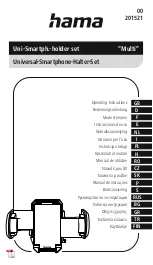
DBS3900 LampSite
Installation Guide
6 Installing an RHUB
Issue 08 (2016-05-30)
Huawei Proprietary and Confidential
Copyright © Huawei Technologies Co., Ltd.
36
Labels or nameplates are attached to both ends, joints, or turns of cables after they are
installed.
Safety
The steel pipe or fire-resistant rigid polyvinyl chloride pipe should be used for the cable
duct or for routing cables. The cross-sectional usage of the cable duct should be 30% to
50% and that of the pipe for routing cables should be 25% to 30%.
Cables are placed away from sharp objects or wall burrs. If these positions are inevitable,
protection pipes are required for the cables.
Cables are routed away from heat sources, or heat-insulation materials are added
between cables and heat sources.
Cables are routed away the cooling vents of the RHUB.
A clearance is reserved at turns of a cable or the position close to a device, facilitating
cable and device maintenance. The recommended clearance is about 0.1 m.
Requirements for Special Cables
Ethernet Cable
A maximum of 100 Ethernet cables can be bundled if no PVC pipes are used. If pipes are
used, a maximum of 24 Ethernet cables can be led through a pipe. In this case, ensure
that 1/3 space inside the pipes must be vacant.
The point at which an Ethernet cable is bundled must be spaced 400 mm or less from the
Ethernet port on an RHUB.
For the RHUB used in the elevator engine room on the rooftop, generator set for the
subway engine, and equipment room with central air conditioning, Ethernet cables must
be led through metallic conduits that are reliably grounded at both ends.
Power cable
Positions for routing power cables meet requirements of the engineering design.
Cables are routed only by qualified and trained personnel before all preparations are
made.
Cables are routed in an untangled and orderly fashion.
PGND cable
PGND cables are buried in the ground or routed indoors. They cannot be routed
overhead before they are routed into the equipment room.
Outer conductors of coaxial cables and both ends of the shield layers on shielded cables
are in proper electrical contact with the metal surface of the equipment to which they are
connected.
PGND cables and signal cables are installed in an untangled and orderly fashion. A
certain distance is reserved between them to prevent interference from each other.
Fuses or switches are not allowed on PGND cables.
Other devices cannot be used for electrical connections of PGND cables.
All the metal parts in the equipment are reliably connected to the ground terminal.
Optical cable
Cables are routed in an untangled and orderly fashion.
Optical fibers cannot be bound at turns.
















































